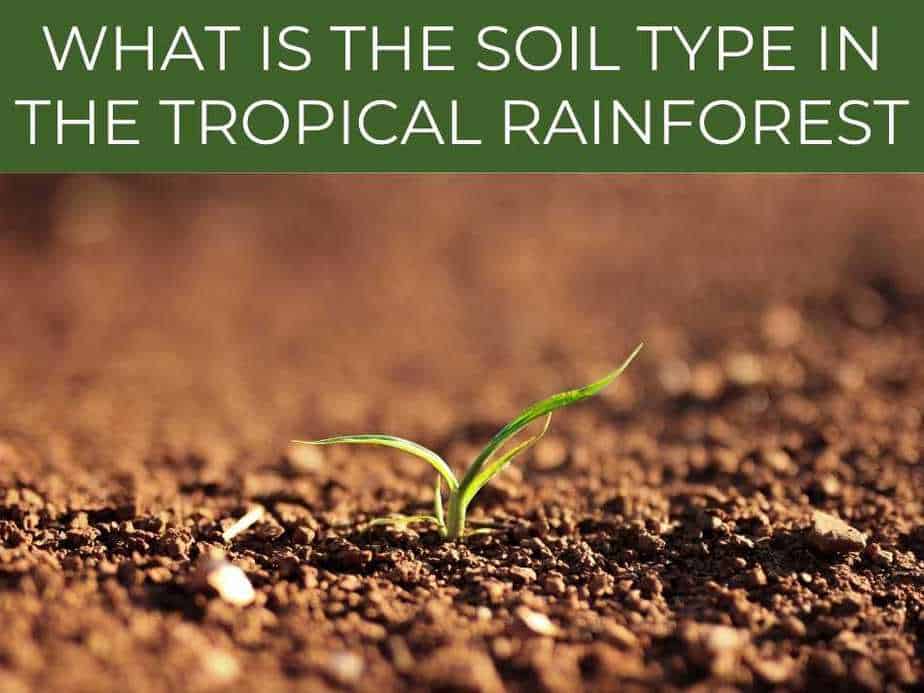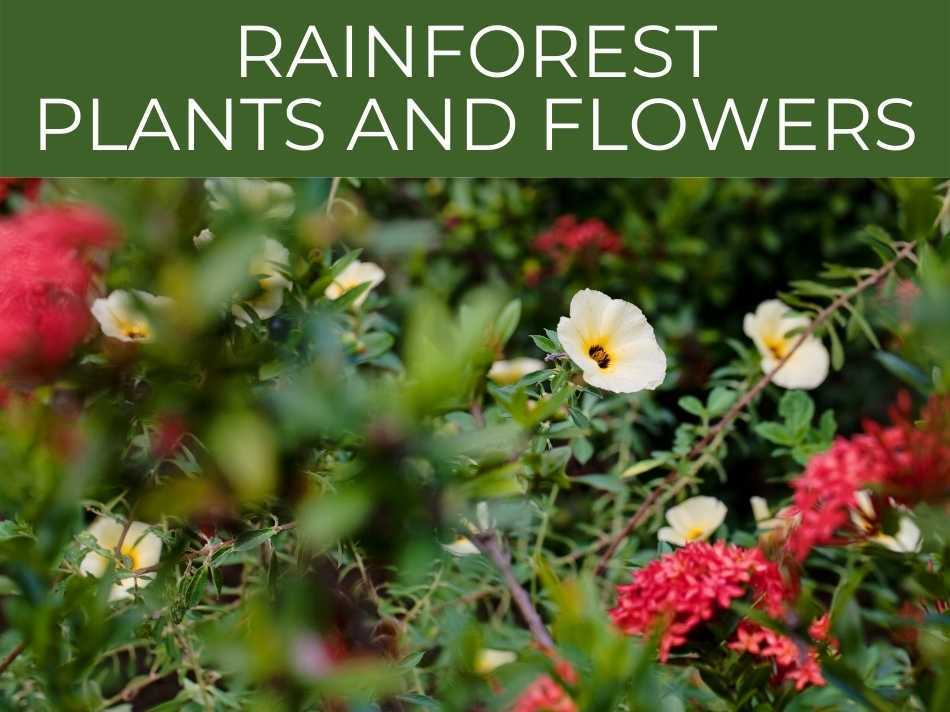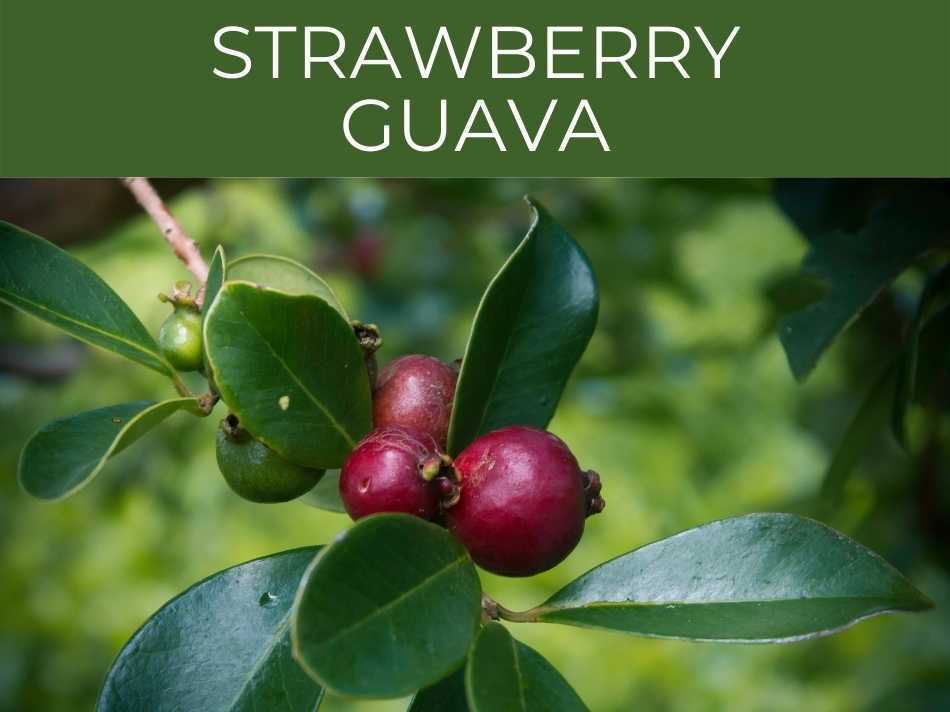If you have a green thumb, you must have an interest in tropical rainforests: the type of vegetation that grows there, the soil, the fauna, everything. You might wonder what is the soil type in the tropical rainforest? Let’s have a look.
Tropical rainforest soils are primarily composed of ultisols and oxisols. Although these soils are rich in aluminum oxide and iron oxide–which gives the soil its red color–tropical rainforest soil fertility is actually quite low.
Although you’ll find a lot of vegetation in rainforests, organic matter in the soil is lesser as compared to tropical forests. In this article, we will have a deeper look at the soil found in tropical forests, its features, and the flora it produces.

What is The Soil Type in The Tropical Rainforest?
The primary types of soil in tropical rainforests are Ultisols and Oxisols. Both types of soils are rich in aluminum oxide and iron.
Surprisingly, soil found in tropical rainforests is very poor in nutrients and has low fertility. So basically, the tropical rainforest soil is very poor.
With all the thick vegetation, moisture, and warmth, you would consider this soil very rich.
However, the truth is otherwise.
There are many reasons for this poor soil, and some of them are:
● Nutrients Stored in Plants:
In forests, when dead organic matter falls to the ground, it adds valuable nutrients to the soil.
In cooler or drier regions, this nutrient is built up in the soil for new growth.
Contrary to that, in a tropical rainforest, the newly added nutrients to the soil are reabsorbed by plants as fast as they are deposited.
Moreover, most trees in these forests are evergreen, and very few leaves actually fall onto the ground.
● Poor Soil Ability to Hold Nutrients:
The type of soil particles present in tropical forests has a very poor ability to hold nutrients for longer and prevent them from washing away.
Even if you add nutrients to this soil artificially, the high volume of rainfall these forests receive wash them away in no time.
● Rapid Decomposition:
Due to the high temperature and moisture content in tropical rainforests, the dead organic material added to the soil decomposes rapidly as compared to other climates, and thus, nutrients are released and absorbed quickly.
● Humans Destroying Nutrients:
When humans burn rainforests for raising crops or cattle, most of the nutrients in the soil are being burned with the vegetation.
This is another important reason for depleting soil nutrients.
If the soil of tropical forests is this poor, how do you find a good amount of shrubs and trees growing there?
Well, you’ll find the answer above the soil.
On the ground, there is a layer of quickly decaying animals and plants.
Most nutrients from these sources are washed away by heavy rainfall without allowing them to enter much in the soil.
Soil Types in The Tropical Rainforest
Usually, the soil in tropical forests is several meters deep.
However, this soil is often leached or washed out, and a large number of nutrients and minerals are removed from the subsoils.
It also breaks down rocks to produce soil.
The leaching process for millions of years has left the soil with no to too little number of some of the fundamental nutrients required by plants.
The primary types of soil in tropical rainforests are Ultisols and Oxisols. Both types of soils are rich in aluminum oxide and iron.
The topsoil of these regions holds a huge amount of carbon that has a major influence on carbon dioxide levels, and thus, an important potential influence on climate change.
Due to deforestation on a large scale, tropical rainforests do not occupy more than 0.3% of the land surface on Earth.
Topsoil plays an important role for all plants–no matter if they’re in forests or at home.
For houseplants, check our top soil for houseplants: 4 common problems & which soil to use.

Temperate Rainforest Soil Type
The temperate rainforest soil is fertile. Usually, this soil is dark and damp.
The dampness of soil is mainly due to the moisture and high amount of rainfall, whereas, the darkness is due to trees shading the sunlight.
The fertility of temperate rainforest soil is a result of dead organic material on the forest floor that is being decomposed by insects, bacteria, and fungi.
Typically, the temperate rainforest soil consists of:
- Andisols – formed by the deposit of volcanic ash
- Spodosols – mainly sand
- Alfisols – soil with a clay-enriched horizon.
Rainforest soil characteristics
The soil in a tropical rainforest is acidic and nutrient-poor. It lacks many essential elements needed for plant life such as nitrogen, phosphorus, and potassium (NPK).
Rainforest soil is extremely acidic. Soil acidity is a term used to describe the pH of the soil.
It’s measured on a scale from 0 to 14, with 0 being very acidic and 14 being very alkaline.
Rainforest soils are typically acidic because they’re rich in decaying organic matter, which leaches out nutrients into the soil and lowers its pH.
The acidity of rainforest soils usually ranges between 3 and 5, which means that it is very acidic compared to other types of soil.
This fact makes rainforest soils poor in nutrients like nitrogen and phosphorus, but rich in organic carbon and calcium.
In order to help plants thrive in this nutrient-poor environment, the organisms living on the forest floor have developed adaptations for extracting nutrients from their surroundings.
These adaptations include symbiotic relationships with fungi or bacteria (called mycorrhizae) that help them get more out of their environment than they would otherwise be able to do alone.
The soil in a tropical rainforest is constantly being recycled by decaying matter from plants and animals.
Because there are so many organisms living in this environment, decomposition happens much faster than it does in other ecosystems like deserts or grasslands.
Find out about the characteristics of grassland soil here.
However, because there aren’t many minerals present to begin with (as those would have been washed away during periods of heavy rainfall), the mineral content of these soils is lower than what you’d find in other places around the world.
Does tropical rainforest have poor soil?
Yes, poor soil is a problem in tropical rainforests. Despite the fact that tropical rainforests can have trees over 100 feet in height, these forests have poor soil, and plants living in them use up nutrients rapidly.
Many people wrongly assume that rainforests have rich, high-quality soil.
In fact, early scientists believed the lush plants in the rainforest were due to nutrient-rich soil and encouraged settlers to cut down forests to grow crops.
Plants grew initially but growth quickly declined due to poor soil quality.
Find out more about the relationship between plants and soil here.
The soil in a tropical rainforest has very few nutrients.
This means that plants can’t grow very well in the tropical rainforest because their roots have a hard time getting their nutrients from the soil and then taking them up into the plant itself.
Another reason tropical rainforests have poor soil is connected to litterfall.
Litterfall is the dead leaves, branches, and other debris that falls from trees.
This litter lies on the ground, decomposes, and becomes a source of nutrients for plants.
Tropical trees produce low-quality litter that decomposes slowly.
Soil composition is also different in these areas because they tend to have shallow topsoil layers due mainly to frequent flooding during heavy rainfall seasonally (from November through March).
Topsoil plays an important role for all plants–no matter if they’re in forests or at home.
For houseplants, check our article: top soil for houseplants:
During these times when water levels rise quickly along with temperature fluctuations between day & night temperatures (think hot days followed by cold nights), it causes chemical reactions within certain types of soils which produce heavy metals such as lead & mercury among others.
Why is rainforest soil poor?
The soils of rainforests are poor in essential nutrients, which is why it’s so hard to grow crops there. The reason for this isn’t just because the soil is low in minerals and nutrients—it’s because these nutrients cycle through the trees so quickly that they don’t have time to accumulate in the soil.
In a rainforest, most of the carbon and essential nutrients are locked up in living vegetation, dead wood, and decaying leaves.
As organic material decays, it is recycled so quickly that few nutrients ever reach the soil, leaving it nearly sterile.
Unlike other ecosystems where nutrients can be recycled from dead plants or animals back into the ground to be used again, tropical rainforests do not have this ability.
That’s because they don’t have tree roots that go deep enough underground for them to reach previously deposited organic materials.
In fact, most trees in a tropical rainforest grow up into the air above ground level rather than downwards towards the earth (which would give them access to these nutrients).
Rainforests have a very high rate of nutrient loss.
The live vegetation has a limited capacity to hold nutrients, and the soil does not retain nutrients well. Nutrients quickly leech out of the soil, carried away by water as it percolates through the soil.
Why is rainforest soil important?
Rainforests are a rich source of biodiversity, and this is of huge importance. Soil is important for the rainforest and for tropical plants, animals, and humans. Soil is also important for the health of the ecosystem in a tropical rainforest.
Rainforests are home to some of the most diverse ecosystems on Earth.
Rainforests contain nearly half of the animals and plant species that exist on the planet, with one in 5 of all birds in the world living in the Amazon rainforest.
Tropical rainforest soils are teeming with life, from bacteria to fungi to larger organisms such as worms and insects.
The biodiversity of the soil is an important indicator of how healthy a given ecosystem is, and what kinds of plants can grow in it.
The more diverse the soil is, the more likely it is that different kinds of plants will be able to survive there.
Rainforest soil is important because it provides habitat, food, and water for animals and plants.
The soil is also home to many microorganisms that help break down dead organic matter and release nutrients back into the soil.
These nutrients are then taken up by plants, which are eaten by animals. This cycle of life is what keeps rainforests healthy!
This cycle also has an impact on human life and society.
Chocolate, coffee, and even rubber are produced from plants that grow in the rainforest, so maintaining a balanced rainforest ecosystem is crucial to many industries around the world.

Rainforest Carnivorous Plants
Most carnivorous plants are found in areas that have abundant water and sunlight but have a low amount of nutrients in the soil–especially nitrogen.
With an incredible adaptation, they are able to trap and digest small animals and insects.
Carnivorous plants have bright-colored leaves and sweet nectar that attract their prey, and once they arrive, the plant traps them.
To trap their prey, plants leaves several tactics:
● Adhesive Traps
The plants that use adhesive traps usually have special glands on the end of their leave stalks that produce a sticky substance to trap small insects.
Sundews use this technique to grab food.
● Suction Traps
For this technique, plants have bladders covered with lids or trap doors.
As soon as an insect touches this trap door, it is sucked into the bladder and digested.
Bladderworts use its suction trap to get food.
● Pitfall Traps
Plants like pitcher plants use this technique to trap their prey.
They have a pool filled with enzymes, and when a prey slips in it, it gets digested.

● Snap Traps
Some plants have leaves that snap shut when their trigger hair are touched by more than once.
Venus flytrap plants use this way to capture their food.
Some common carnivorous plants found in tropical rainforests are:
● Genlisea
● Venus flytrap
● Pitcher plant
● Bladderworts

Rainforest Plants and Flowers
More than two-thirds of the plant species are found in the tropical rainforests.
These plants not only provide food for animals found in the region but are also the largest contributor to the world’s oxygen supply.
Flowers of tropical rainforests are adapted to hot and humid climates.
These forests are home to exotic flowers and carnivorous plants found there can be up to 30 feet.
The main type of plants and flowers found in tropical rainforests include:
● Rubber trees
● Cacao
● Passionflower
● Queen’s tears
● Monkey brush vines
● Kapok tree
● Bromelia
● Orchids
Orchids are beautiful flowers that can grow in different conditions.
If you want to add a colorful addition to your garden, you can check how to grow orchids in a greenhouse.

Rainforest Fruits
Tropical rainforests produce a wide variety of fruits.
According to an estimate, there are more than 3,000 types of edible fruits are grown in tropical rainforests alone.
In these forests, thousands of different types of fruits grow, many of them are not known by people.
Some of the common fruits found in most rainforests are:
● Figs
● Bananas
● Oranges
● Dates
● Lime
● Avocadoes
● Passion fruit
● Grapefruit
The uncommon fruits include:
● Kumbu or bacaba

● Strawberry guava
● Camu-Camu
● Jagua
● Acai palm berry
● Buriti
Strawberry guava is a common fruit found in many areas of tropical rainforests.
This fruit tastes just like strawberries and is often used to make jams.
There are many other fruits as well.
Many of these fruits are used by locals in different forms for various purposes.
Some of these fruits also have medical benefits and people have been using them for treating specific health issues.
Note: if you want to see your strawberry plants thrive in your garden, check out how to keep slugs from strawberries.

Rainforest Ferns
Ferns are a type of plant that is known as epiphytes.
These plants thrive best in rainforests.
They can easily grow on other plants but do not harm them.
The leaves of ferns look like feathers and fans. Almost all ferns do not produce flowers, fruits, or seeds.
Instead, they reproduce through spores.
As many plants have been living on our planet for millions of years, ferns are here for much longer.
Scientists believe that they were present even 325 million years ago.

Tropical Rainforest Ferns
Ferns have adapted to tropical rainforests, and the main adaptation is the presence of a rhizome.
It grows horizontally just beneath the ground that allows it to absorb nutrients easily.
There are more than 40 fern species found only in the tropical regions.
Some common ferns found in rainforests are:
● Staghorn fern
● Golden chicken fern
● Bird’s nest fern
● Rebecca’s tree fern
● King fern
● Gristle fern
● Elkhorn fern

Conclusion
Tropical rainforests have a hot and humid climate and are found near the equator of the Earth.
Despite the poor fertility of tropical rainforest soil, the combination of abundant moisture and constant warmth throughout the year make these forests a suitable home for many exotic plants and animals.
Tropical rainforests are in the news for many reasons around the year.
One of the major concerns about these forests is the issue of deforestation that also results in severe damage to the soil.
f you analyze the situation from the soil’s point of view, the cutting down of tropical rainforests interrupts the natural cycle of soil-plant making the soil highly vulnerable to erosion and loss of the most important topsoil.

